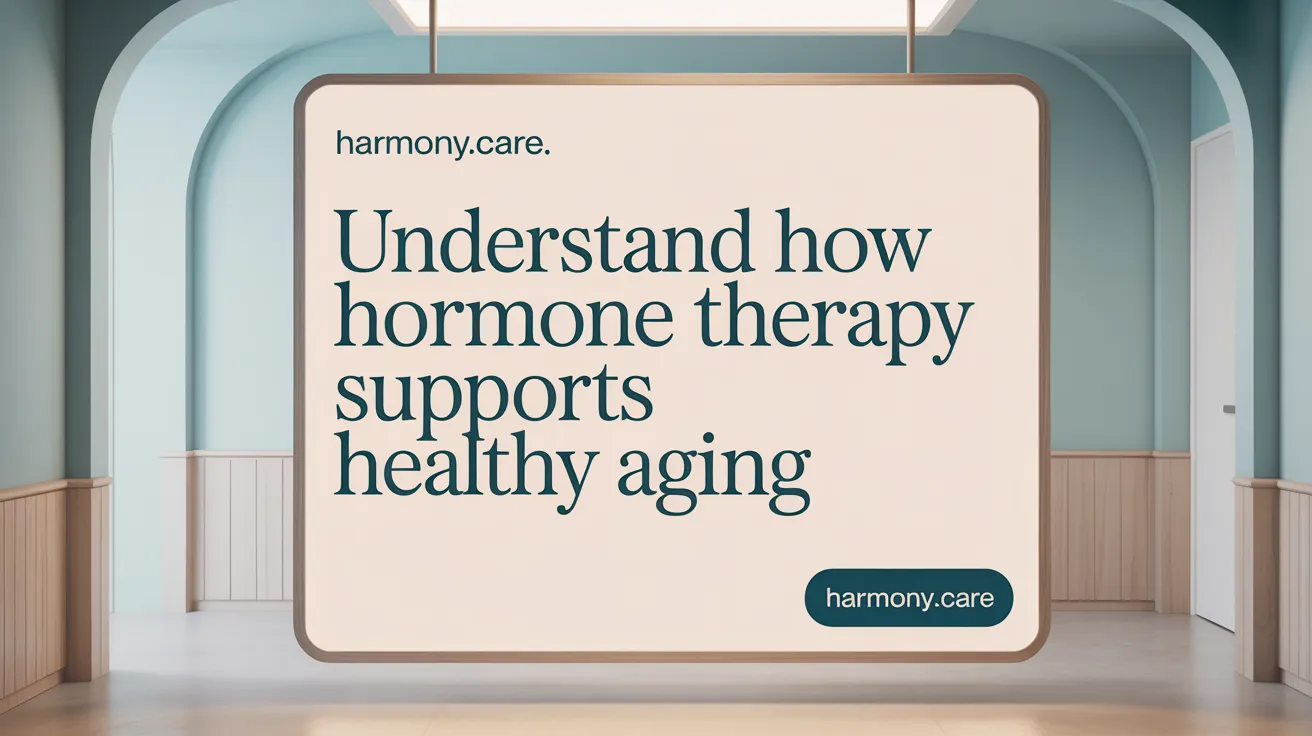Hormones at the Core of Male Health
Understanding the roles of testosterone and estrogen in men is fundamental to grasping how hormone therapy can impact male health and well-being. These hormones are intricately involved in diverse physiological processes, and imbalances can lead to significant health concerns. This article explores the science behind testosterone and estrogen, the indications for their therapy, how treatment is administered and monitored, and the benefits and risks associated with hormone replacement therapy in men.
The Vital Roles of Testosterone and Estrogen in Male Physiology
What are testosterone and estrogen hormones, and what roles do they play in male health?
Testosterone and estrogen are hormones that significantly influence male health, each contributing to different physiological processes. Testosterone, produced mainly in the testicles, is vital for developing male physical characteristics such as facial and body hair, a deeper voice, increased muscle mass, and bone density. It also regulates sperm production, sex drive, and overall energy levels.
Despite its reputation as a female hormone, estrogen is also an important hormone in men. It is derived from testosterone through a process called aromatization and helps maintain libido, support erectile function, and promote bone health. Estrogen plays a role in metabolic processes and mood regulation.
Imbalances in these hormones can cause various health issues. Low testosterone may lead to decreased muscle mass, reduced libido, and osteoporosis, while excess estrogen can cause gynecomastia, mood swings, and fluid retention. Maintaining a balance between testosterone and estrogen is crucial for health and well-being.
How does testosterone production influence male development?
Testosterone levels peak during adolescence and early adulthood, triggering the development of male secondary sexual characteristics. As men age, testosterone levels gradually decline, about 1% per year after age 30 or 40. This natural decline can impact muscle mass, fat distribution, bone density, and sexual function.
What is the importance of estrogen in men?
In men, estrogen supports various functions including regulating libido, erectile function, and bone strength. It is also involved in metabolic health and mood stability. Too much or too little estrogen can lead to health complications, such as gynecomastia or osteoporosis. It is essential to keep estrogen within normal ranges, which is often achieved through a balance of diet, lifestyle, or medical intervention like aromatase inhibitors when necessary.
How do hormonal balance and health implications are interconnected?
A balanced hormonal environment is vital for overall health. Excess or deficiency of testosterone or estrogen can contribute to chronic conditions, mood disorders, and physical health problems. Regular monitoring of hormone levels, through blood tests, is recommended, especially for men experiencing symptoms like fatigue, mood swings, reduced libido, or muscle loss.
Understanding the roles of testosterone and estrogen underscores the importance of hormonal health management. Whether through lifestyle adjustments, medical therapy, or both, maintaining hormonal equilibrium supports sustained vitality and quality of life.
| Hormone Type | Primary Functions | Impact of Imbalance | Common Interventions |
|---|---|---|---|
| Testosterone | Development of male characteristics, libido, muscle and bone strength, red blood cell production | Low levels: fatigue, reduced libido, muscle loss | Hormone therapy, lifestyle changes |
| Estrogen | Libido, erectile function, bone health, metabolic regulation, mood | High levels: gynecomastia, mood swings, water retention | Aromatase inhibitors, diet, lifestyle |
Understanding the interaction between these hormones helps in appreciating their essential roles in maintaining male health and the importance of balanced levels for optimal well-being.
Indications for Testosterone and Estrogen Therapy in Men

What are the common indications and reasons for hormone therapy in men?
Hormone therapy in men is primarily used to treat specific health conditions related to hormonal imbalance or certain cancers. The most common reason for testosterone therapy is hypogonadism, a condition where the testes produce insufficient testosterone, leading to symptoms such as low libido, fatigue, muscle loss, and mood changes. Correcting low testosterone levels through therapy can improve these symptoms and enhance overall well-being.
In addition to addressing hypogonadism, testosterone therapy is also used in managing prostate cancer. In such cases, treatments aim to lower or block testosterone, which is essential for the growth of prostate cancer cells. This form of therapy helps control the progression of the disease.
Another significant application is in gender-affirming treatment for transgender men. Testosterone administration results in male secondary sexual characteristics, including increased muscle mass, facial and body hair growth, deepening of the voice, and redistribution of body fat.
Furthermore, hormone therapy may be employed to correct hormonal imbalances that affect bone density, contribute to certain breast cancers responsive to estrogen, or manage other health issues like metabolic disturbances. The decision to start hormone therapy involves thorough evaluation by healthcare professionals, considering potential benefits and risks.
Overall, these treatments depend on individual health status, specific medical conditions, and ongoing monitoring to ensure safety and efficacy.
Recognizing Hormonal Imbalance and How Therapy Can Help

What signs or symptoms indicate hormonal imbalance in men, and how can hormone therapy help address them?
Men experiencing hormonal imbalance often show various physical and emotional signs. Common symptoms include a decrease in sexual desire, erectile dysfunction, reduced muscle mass and strength, increased body fat, fatigue, mood swings, and depression. Some men might notice less facial and body hair growth or weakened bones, leading to increased risk of fractures. Additionally, infertility and gynecomastia (enlarged breast tissue) can be signs of hormonal issues.
Hormone therapy, primarily testosterone replacement therapy (TRT), aims to restore hormone levels to a healthier range. This can lead to improvements in libido, sexual performance, muscle mass, mood stability, and overall energy. Treatments are personalized and come in various forms such as gels, injections, patches, or pellets, depending on individual needs.
Proper diagnosis through blood tests and ongoing monitoring is vital. This ensures the therapy effectively relieves symptoms while minimizing potential side effects or risks. Regular adjustments help maintain hormonal balance, promoting better health and quality of life for men with imbalances.
Methods and Procedures for Administering Testosterone and Estrogen Therapy
 Testosterone and estrogen therapy in men involve various methods of administration, tailored to each individual’s health needs and treatment goals. Common delivery options include injections, transdermal patches, gels, pellets implanted under the skin, oral capsules, and prolonged-injection formulations. Each method offers different advantages and considerations. For example, injections can be administered intramuscularly or subcutaneously at regular intervals, while gels and patches provide steady hormone absorption through the skin. Pellets are surgically inserted and release hormones gradually over months, reducing the need for daily application.
Testosterone and estrogen therapy in men involve various methods of administration, tailored to each individual’s health needs and treatment goals. Common delivery options include injections, transdermal patches, gels, pellets implanted under the skin, oral capsules, and prolonged-injection formulations. Each method offers different advantages and considerations. For example, injections can be administered intramuscularly or subcutaneously at regular intervals, while gels and patches provide steady hormone absorption through the skin. Pellets are surgically inserted and release hormones gradually over months, reducing the need for daily application.
Before initiating therapy, a comprehensive diagnostic evaluation is essential. This includes blood tests to accurately measure baseline testosterone levels, as well as assessments of other reproductive hormones such as luteinizing hormone (LH) and follicle-stimulating hormone (FSH). Healthcare providers also perform screenings for prostate health, cardiovascular risk factors, and other relevant health conditions. Additional physical examinations and medical history reviews help determine if hormone therapy is appropriate and safe.
Monitoring during treatment is crucial to ensure effectiveness and safety. Regular follow-up appointments are scheduled for blood tests to check hormone levels, hematocrit, prostate-specific antigen (PSA), and lipid profiles. Physicians observe for signs of side effects such as changes in mood, skin reactions, sleep disturbances, or cardiovascular symptoms. Blood counts are closely watched as testosterone therapy can increase red blood cell production, potentially raising the risk of clots.
Adjusting dosages is a fundamental part of hormone therapy management. If hormone levels are too low or high, physicians modify the dose accordingly to keep them within the normal physiological range. Managing side effects involves modifying administration frequency, switching delivery methods, or reducing doses. For example, elevated estrogen levels caused by aromatization may require the use of aromatase inhibitors like anastrozole. Continual monitoring and personalized adjustments help optimize therapy outcomes while minimizing risks.
In summary, testosterone and estrogen therapy involve a combination of various administration techniques, thorough pre-treatment assessments, vigilant ongoing monitoring, and tailored dose adjustments. These practices aim to safely restore hormone balance, induce desired physical and physiological changes, and reduce adverse effects, ensuring a personalized approach in managing male hormonal health.
Testing and Monitoring Hormone Levels During Therapy
 To ensure the safety and effectiveness of hormone therapy, rigorous testing and ongoing monitoring of testosterone and estrogen levels are essential. These levels are primarily evaluated through blood tests, which are conducted before initiating treatment and at various points during therapy.
To ensure the safety and effectiveness of hormone therapy, rigorous testing and ongoing monitoring of testosterone and estrogen levels are essential. These levels are primarily evaluated through blood tests, which are conducted before initiating treatment and at various points during therapy.
Testosterone levels are commonly measured using advanced techniques such as mass spectrometry or immunoassays. Typically, healthcare providers check these levels around 3 and 6 months after starting therapy, then annually once the hormone levels stabilize. Regular testing helps track whether testosterone levels are within the optimal range, usually between 300 and 1,000 ng/dL, and allow adjustments if needed.
Estradiol, a form of estrogen, is also monitored because of its role in balancing hormonal effects, especially in transgender men or those on specific therapies. Measurement methods include immunoassays or mass spectrometry, with more frequent checks if symptoms or clinical concerns suggest hormone imbalance.
Besides hormone levels, several other assessments are vital. Regular testing of prostate-specific antigen (PSA) provides information about prostate health, particularly important when testosterone levels are altered. Complete blood counts, including hematocrit and hemoglobin levels, are periodic checks to identify polycythemia, a condition that increases the risk of blood clots. Liver function tests and lipid profiles are conducted to monitor metabolic health and cardiovascular risk.
The frequency of these tests varies: initial checks are more frequent—every few months—until therapy is stabilized, after which annual assessments typically suffice. In complex cases or when symptoms change, the monitoring schedule may be adjusted.
Overall, consistent monitoring is critical for detecting side effects early and ensuring that hormone therapy achieves the desired health and aesthetic outcomes. It also allows safe management of potential risks such as blood thickening, estrogen excess, or effects on the prostate, helping practitioners tailor therapy to each individual’s needs.
Benefits and Positive Effects of Hormone Therapy in Men
What benefits and positive effects can men expect from testosterone and estrogen therapy?
Men who undergo testosterone and estrogen therapy often experience a range of improvements that enhance their overall well-being and quality of life. One of the most noticeable benefits is an increase in sexual desire and improved sexual function, including better erectile performance and libido, which can significantly impact personal relationships and self-esteem.
Hormone therapy also promotes physical health by increasing muscle strength, lean body mass, and bone density, thereby reducing the risk of osteoporosis and related fractures. It can help reshape body composition by lowering fat mass and supporting healthier muscle development.
Cognitive and mental health aspects also improve with hormone therapy. Many men report enhanced mood, increased energy levels, and greater motivation. Additionally, cognitive functions such as memory and reasoning often see a boost, contributing to a better quality of life.
These benefits are especially important for men with low testosterone levels caused by conditions like hypogonadism. Restoring hormonal balance can alleviate symptoms such as fatigue, irritability, and low vitality.
However, it’s essential to understand that hormone therapy carries potential risks and side effects. Therefore, it should be tailored to individual health needs under the guidance of a medical professional. Proper monitoring helps maximize benefits while minimizing adverse effects, ensuring optimal outcomes for men considering hormone treatment.
Risks, Safety Considerations, and Side Effects of Hormone Therapy in Men
What are the potential risks, safety considerations, and side effects associated with hormone therapy in men?
Hormone therapy in men, including testosterone replacement therapy (TRT), can offer significant benefits but also comes with a range of potential risks and side effects. These are important to understand and monitor during treatment.
One of the primary concerns involves cardiovascular health. Hormone therapy may increase the risk of heart problems such as heart attack, stroke, and blood clots. Changes in blood lipid profiles, including increased red blood cell count (polycythemia), can make the blood thicker, raising the risk of clots that could lead to serious events.
Additionally, prostate health is a major consideration. TRT can exacerbate benign prostatic hyperplasia (BPH)—an enlargement of the prostate—leading to urinary difficulties. Though studies are mixed, there is concern that testosterone may stimulate prostate cancer growth in some cases. Men with a history of prostate cancer or elevated prostate-specific antigen (PSA) levels should consult their healthcare providers before initiating therapy.
Reproductive risks are also significant. Exogenous testosterone can suppress the body's natural sperm production, potentially causing infertility. As a result, men wishing to preserve fertility should discuss alternative options or adjunct therapies.
Common side effects of hormone therapy include hot flashes, fatigue, and weight gain. Men may also experience increased breast tissue development (gynecomastia), which can sometimes be uncomfortable or painful. Muscle and bone mass may decrease if hormone levels are not properly maintained, increasing the risk of osteoporosis and fractures. Mood swings, depression, or cognitive changes such as memory issues can also occur, affecting overall well-being.
To mitigate these risks, ongoing medical supervision is crucial. Regular blood tests help monitor testosterone, estrogen, hematocrit, and PSA levels, allowing adjustments to therapy. Lifestyle modifications—like maintaining a healthy diet, exercising, managing stress, and avoiding tobacco or excessive alcohol—support treatment safety.
Moreover, some adverse effects can be managed with additional medications. For example, aromatase inhibitors like anastrozole can control estrogen levels and prevent gynecomastia. Bone loss can be prevented or treated with bisphosphonates and calcium supplementation.
In summary, while hormone therapy provides meaningful benefits for men with low testosterone levels, it requires attentive medical oversight to minimize risks. Patients should be fully informed of potential side effects, regularly monitored, and supported through lifestyle changes to ensure safe and effective treatment.
Hormone Therapy’s Role in Aging and Insights from Current Research

How does testosterone and estrogen therapy impact aging and overall well-being in men?
As men age, their natural levels of testosterone decline at about 1% annually after the age of 30 or 40. This reduction can lead to diminished muscle mass, decreased bone density, lower libido, mood changes, and reduced energy. Testosterone and estrogen therapies aim to counter these effects by restoring hormonal balances.
Testosterone therapy, especially for men with confirmed deficiencies, can positively influence physical health and mental well-being. Many men experience improved muscle strength, increased bone density, enhanced libido, and better mood and energy levels. These benefits can help mitigate some age-related declines, improving quality of life.
Estrogen, although often associated with women, plays vital roles in men’s health, particularly in maintaining bone density. Adequate estrogen levels help reduce fracture risks and support overall skeletal integrity, highlighting the importance of hormonal balance.
However, hormone therapy is not an absolute solution. Its benefits are modest, and responses vary based on individual health status. Moreover, hormone treatments carry risks such as cardiovascular problems, prostate health concerns, and erythrocytosis, which requires careful and personalized medical supervision. Overall, hormone replacement therapy can be beneficial for men with low testosterone, provided it’s administered prudently, considering potential risks and individual health needs.
What does current medical research say about the effectiveness and safety of hormone therapy in men?
Recent studies suggest that testosterone therapy effectively improves several symptoms associated with low testosterone levels, like decreased libido, muscle weakness, and osteoporosis. It can also enhance mood and mental clarity, thus contributing positively to overall health in hypogonadal men.
Nevertheless, safety remains a significant concern. Ongoing research shows mixed results regarding possible long-term risks, including cardiovascular issues, prostate cancer progression, sleep apnea, and increased blood clot risks due to elevated hematocrit levels. While some evidence indicates neutral or even beneficial effects on heart health, caution is advised, especially for men with pre-existing cardiovascular risks.
Current guidelines emphasize careful patient selection, thorough evaluations before starting treatment, and regular monitoring during therapy. Blood tests are essential to track testosterone, estrogen, blood cell counts, and prostate health indicators.
Importantly, testosterone therapy is generally not recommended for healthy aging men without diagnosed deficiencies. Instead, treatment should be reserved for men with clinically confirmed low levels and related symptoms. This cautious approach helps maximize benefits while minimizing potential harms, underscoring the importance of individualized care based on ongoing research and current medical standards.
Balancing Benefits and Risks in Male Hormone Therapy
Testosterone and estrogen therapy in men offer compelling benefits for correcting hormonal imbalances and alleviating symptoms associated with low hormone levels. They play significant roles in maintaining physical vitality, sexual function, bone health, and psychological well-being. However, hormone therapy is not without risks; potential cardiovascular, reproductive, and prostate-related concerns necessitate careful patient selection, personalized treatment plans, and vigilant ongoing monitoring. Emerging research continues to clarify the safety and efficacy of these treatments, emphasizing that hormone therapy should be approached as a medically guided, individualized therapy rather than a universal solution for aging. Men considering hormone replacement therapy should consult knowledgeable healthcare providers to make informed decisions tailored to their health profiles and goals, maximizing benefits while minimizing risks for optimal long-term outcomes.
References
- Testosterone therapy: Potential benefits and risks as you age
- Risks of testosterone replacement therapy in men - PMC
- Information on Testosterone Hormone Therapy
- How Men Can Manage Estrogen on TRT
- What is Hormone Replacement Therapy (HRT)?
- Testosterone Treatments: Why, When, and How? | AAFP
- Understanding How Testosterone Affects Men
- Testosterone — What It Does And Doesn't Do
- Testosterone Replacement Therapy (TRT): What It Is
- Testosterone therapy: Potential benefits and risks as you age
